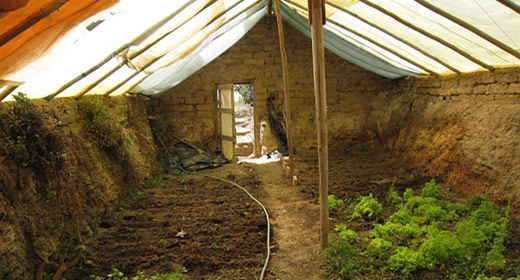by Jennifer Fernadeau: St. Teresa was ordered by superiors to write down her experience of prayer, as well as her autobiography and a history of her foundations…
so we have a detailed account of her life. These things were written for our sake. As a founder and teacher of prayer, her writings, along with those of co-founder St. John of the Cross, have nourished the Church for almost five centuries.
As St. John wrote in The Living Flame of Love, in his description of the mystical grace of the transpiercing of the soul, “Few persons have reached these heights. Some have, however, especially those whose virtue and spirit were to be diffused among their children. With respect to the first fruits of the spirit, God accords to founders wealth and value commensurate with the greater or lesser following they will have in their doctrine and spirituality.” [Living Flame of Love, Stanza 2, paragraph 12, from The Complete Works of Saint John of the Cross, translated by Kieran Kavanaugh, OCD and Otilio Rodriguez, OCD, ICS Publications, Washington, DC]
VISIONS OF THE SACRED HUMANITY OF CHRIST
St. Teresa describes the beginning of a period of spiritual betrothal, which is like a falling in love, with these words: “When I represented Christ within me in order to place myself in His presence, or even while reading, a feeling of the presence of God would come upon me unexpectedly so I could in no way doubt that He was within me or I totally immersed in Him. … The soul is suspended in such a way that it seems to be completely outside itself.” [Life 10:1]
The experience of Christ’s presence stayed with St. Teresa for several days, no matter how much she tried to ignore Him (in obedience to her directors). And then Christ began to reveal to her His Sacred Humanity; first His Hands, then His Face, and lastly His entire form. She writes, “Glorified bodies have such beauty that the sight of so supernatural a beauty deriving from glory causes confusion.”
She felt that Christ had revealed Himself to her gradually because of her natural weakness. Not long afterwards, on a feastday of St. Paul, “this most sacred humanity in its risen form was represented to me completely, as in paintings, with such wonderful beauty and majesty!” [Life 28:3].
She describes these visions as imaginative, although, as she states, “I did not see these visions – or any other – with my bodily eyes.” [Life 28:4] She describes the difference between these visions and a human image as the difference between life and death: “For if what is seen is an image – it is a living image, not a dead man, but the living Christ. And He makes it known that He is both man and God, not as He was in the tomb, but as He was when He came out of the tomb after His resurrection. Sometimes He comes with such great majesty that no one could doubt but that it is the Lord Himself. Especially after receiving Communion – for we know that He is present since our faith tells us this – He reveals Himself as so much the Lord of this dwelling that it seems the soul is completely dissolved; and it sees itself consumed in Christ.” [Life 28: 7,8]
St. Teresa describes the effects of these visions: “That majesty and beauty remain so impressed that they are unforgettable …. The soul undergoes a change; it is always absorbed; it seems that a new, living, high degree of love is beginning.” [Life 28:9]
Teresa was blessed with both intellectual and imaginative visions, which she describes as follows:
“These two kinds of visions almost always come together. This is the way they occur: with the eyes of the soul, we see the excellence, beauty and glory of the most holy humanity; and through the intellectual vision … we are given an understanding of how God is powerful, that He can do all things, that He commands all and governs all, and that His love permeates all things.” [Life 28: 11]
Later in her autobiography, Teresa recorded a mystical vision that she alluded to again in her teaching on prayer in Interior Castle. She saw her soul as a “brightly polished mirror” in the center of which she saw Christ in such a way that He filled the mirror, front and back. At the same time, she understood that this mirror was “completely engraved upon the Lord Himself by means of a very loving communication….”
She understood that mortal sin clouds the mirror, leaving it black, and that for a soul not in mortal sin the Lord is constantly present, giving us being. She understood that heresies amount to breaking the mirror.
The main advantage of this vision to people of prayer, she wrote, is the understanding that “the Lord is very deep within their own souls….Within oneself, clearly, is the best place to look; and it’s not necessary to go to heaven, nor any further than our own selves; for to do so would tire the spirit….” [Life 40: 5,6]
Jesus sometimes appeared to St. Teresa during unexpected moments, such as when she was eating or looking at the Cross. She writes that once He appeared to her and took the Cross, which was on her rosary, from her hands, and then gave it back to her with four precious diamonds.
Real diamonds would appear counterfeit next to the beauty of these. The Sacred Wounds on this Cross were of an exquisite workmanship. Jesus told her that from then on she would see the Cross in that way, and so she did. [Life 29:7]
Along with the Sacred Humanity of Christ, Teresa was blessed with visions of Mary and the Saints and, later in her spiritual marriage, with visions of the angels and the Blessed Trinity.
She wrote that Saints Peter and Paul, whom she begged to deliver her from deception, often appeared to her in an intellectual vision at her left side. The Franciscan saints Clare and Peter of Alcantera both appeared to her at different times to encourage her in the practice of poverty.
HER VISION OF HELL
St. Teresa had no reservations about the existence of hell. God had shown it to her in a vision, which she recorded in her autobiography:
“While I was in prayer one day, I suddenly found that, without knowing how, I had seemingly been placed in hell. . . . This experience took place within the shortest space of time, but even if I were to live for many years I think it would be impossible for me to forget it. . . .
The entrance it seems to me was similar to a very long and narrow alleyway, like an oven, low and dark and confined; the floor seemed to me to consist of dirty, muddy water emitting a foul stench and swarming with putrid vermin. At the end of the alleyway a hole that looked like a small cupboard was hollowed out in the wall; there I found I was placed in a cramped condition. . . .
I experienced a fire in the soul that I don’t know how I could describe. The bodily pains were so unbearable that though I had suffered excruciating ones in this life and according to what doctors say, the worst that can be suffered on earth . . . these were all nothing in comparison with the ones I experienced there.
I saw furthermore that they would go on without end and without ever ceasing. This, however, was nothing next to the soul’s agonizing: a constriction, a suffocation, and affliction so keenly felt and with such a despairing and tormenting unhappiness that I don’t know how to word it strongly enough.
To say the experience is as though the soul were continually being wrested from the body would be insufficient, for it would make you think somebody else is taking away the life, whereas here it is the soul itself that tears itself in pieces.
The fact is that I don’t know how to give a sufficiently powerful description of that interior fire and that despair, coming in addition to such extreme torments and pains.
I didn’t see who inflicted them on me, but, as it seemed to me, I felt myself burning and crumbling; and I repeat the worst was that interior fire and despair.
Being in such an unwholesome place, so unable to hope for any consolation, I found it impossible either to sit down or to lie down, nor was there any room, even though they put me in this kind of hole made in the wall. Those walls, which were terrifying to see, closed in on themselves and suffocated everything. There was no light, but all was enveloped in the blackest darkness. I don’t understand how this could be, that everything painful to see was visible. ” [Life 32: 1,2,3]
VISIONS OF MARY AND SAINT JOSEPH
In one of her most wonderful visions, St. Teresa saw Mary at her right side and St. Joseph at her left. Together they vested her in a white robe, telling her that she had purified herself of sin.
Mary then took Teresa’s hands in her own. “She told me that I made her very happy in serving the glorious St. Joseph, and promised that the monastery, named for St. Joseph, would be founded, and that they would be greatly served in it, and that she shouldn’t fear, even though the obedience given was not to her [Teresa’s] liking.” [St. Teresa was forced to begin her reform only with the permission of her bishop, since her Order had rejected her.]
Then Mary placed around her neck a golden necklace with a valuable Cross.
Saint Teresa wrote: “The beauty that I saw in our Lady was extraordinary …. Her garment was of the most brilliant white, not dazzling but soft.”
Mary and Joseph stayed with her for a long time, and then she saw them ascend together into heaven “with a great multitude of angels.” [Life 33:15]
On the eve of the feast of St. Sebastian, Mary descended, with a multitude of angels, to the prioress’ chair during the singing of the Salve in choir. She remained for the duration of the Salve, and then said to Teresa, who had placed a statue of Mary in the chair: “You were right in placing me here. I shall be present in the praises they give my Son, and I shall offer these praises to Him.” [Spiritual Testimonies 21]
On the feast of the Nativity of Mary, St. Teresa renewed her vows in Mary’s hands. [Spiritual Testimonies 43]
After the founding of the monastery of St. Joseph, during prayer after Compline, when all of the nuns were in the choir, St. Teresa saw Mary sheltering the community under her white mantle.
Christ Himself appeared to her before entering the new monastery, placed a crown on her head and thanked her for what she had done for His Mother. [Life 36:24]
VISIONS OF THE BLESSED TRINITY
In her Spiritual Testimonies13 St. Teresa describes what she calls an intellectual vision of the Blessed Trinity:
“On the Tuesday following Ascension Thursday, having remained a while in prayer after Communion, I was grieved because I was so distracted I couldn’t concentrate. So I complained to the Lord about our miserable nature.
My soul began to enkindle, and it seemed to me I knew clearly in an intellectual vision that the entire Blessed Trinity was present. In this state my soul understood by a certain kind of representation (like an illustration of the truth), in such a way that my dullness could perceive, how God is three and one.
And so it seemed that all three Persons were represented distinctly in my soul and that they spoke to me, telling me that from this day I would see an improvement in myself in respect to three things and that each one of these Persons would grant me a favor: one, the favor of charity; another, the favor of being able to suffer gladly; and the third, the favor of experiencing this charity with an enkindling in the soul.
I understood those words the Lord spoke, that the three divine Persons would be with the soul in grace; for I saw them within myself in the way described. . . . It seems those three Persons, being only one God, were so fixed within my soul that I saw that were such divine company to continue it would be impossible not to be recollected.”
Teresa goes on to describe what she calls an habitual experience of the indwelling Trinity, in her Spiritual Testimonies 14:
“I have experienced the presence of the three Persons, which I mentioned at the beginning, up to this day . . . . They are very habitually present in my soul.
Since I was accustomed to experience only the presence of Jesus, it always seemed to me there was some obstacle to my seeing the three Persons, although I understand there is only one God. And the Lord told me today while I was reflecting upon this that I was mistaken in thinking of things of the soul through comparison with corporeal things, that I should know that these spiritual things are very different and that the soul is capable of great rejoicing.
It seemed to me there came the thought of how a sponge absorbs and is saturated with water; so, I thought, was my soul which was overflowing with that divinity and in a certain way rejoicing within itself and possessing the three Persons.
I also heard the words: ‘Don’t try to hold Me within yourself but try to hold yourself within Me.’ It seemed to me that from within my soul – where I saw these three Persons present – these Persons were communicating themselves to all creation without fail, nor did they fail to be with me.”
BEHOLD THIS NAIL: SPIRITUAL MARRIAGE
At the age of fifty-seven, St. Teresa received a pledge of the Lord’s spousal love for her, known as spiritual marriage. St. John of the Cross had just given her Holy Communion, and had broken the Host. Teresa thought that her Father St. John was perhaps trying to mortify her by giving her a small piece of the precious Host.
Then the Lord spoke to her: “ ‘Do not fear, daughter, for no one will be a party to separating you from Me,’ making me understand that what just happened didn’t matter. Then He appeared to me in an imaginative vision, as at other times, very interiorly, and He gave me His right hand and said:
‘Behold this nail; it is a sign you will be My bride from today on. Until now, you have not merited this; from now on not only will you look after My honor as being the honor of your Creator, King, and God, but you will look after it as My true bride. My honor is yours, and yours Mine.’
This favor produced such an effect in me I couldn’t contain myself, and I remained as though entranced. I asked the Lord either to raise me from my lowliness or not grant me such a favor.”
Source: Daughter Of The Truth










































